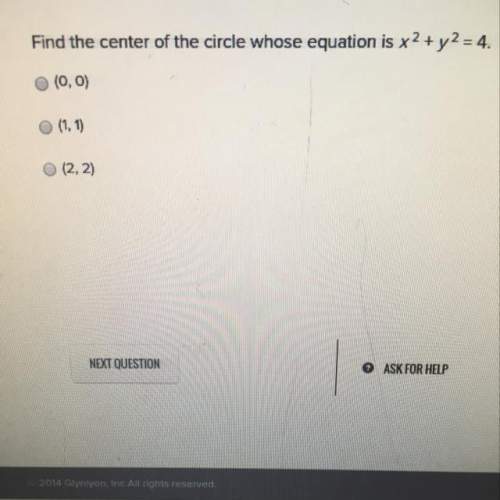
Mathematics, 12.04.2021 16:40 jjhagan22
Each year, large sums of money are donated and collected for numerous philanthropic organizations. Since 2000, charitable donations in the United States have more than tripled to well over $250 billion. In many countries, philanthropy has been included in government policy in the form of tax exemptions for donations to these types of organizations. Today, the focus of most organizations is to the long-term goal of eliminating future need.
Suppose several high schools in a city are sponsoring a walk-athon to raise money for a local charity. A certain route is mapped out through the city and each participant finds sponsors to donate money for the walk. If a participant completes the walk under a certain time, extra money will be donated. You are responsible for recording the finishing times for each of the participants. After collecting all of the data, you determine that the finishing times are normally distributed with a mean of 2.6 hours and a standard deviation of 0.3 hour.
Answer the following questions in complete sentences.
1. What percent of the players finished the walk in less than 2 hours? Show your work.
2. What is the probability that two randomly chosen players completed the walk in 2.9 hours or more? Show your work.
3. What is the probability that four randomly chosen players completed the walk between 1.7 and 2.9 hours? Show your work.
4. What observations can you make about the number of participants who complete the walk in more than 3.5 hours, given that there are 1,200 participants?
5. What might you observe if the number of participants increased or decreased?

Answers: 2


Another question on Mathematics

Mathematics, 20.06.2019 18:04
Here is their argument. given the obtuse angle x, we make a quadrilateral abcd with ∠dab = x, and ∠abc = 90◦, and ad = bc. say the perpendicular bisector to dc meets the perpendicular bisector to ab at p. then pa = pb and pc = pd. so the triangles pad and pbc have equal sides and are congruent. thus ∠pad = ∠pbc. but pab is isosceles, hence ∠pab = ∠pba. subtracting, gives x = ∠pad−∠pab = ∠pbc −∠pba = 90◦. this is a preposterous conclusion – just where is the mistake in the "proof" and why does the argument break down there?
Answers: 2

Mathematics, 21.06.2019 20:00
Use the elimination method to solve the systems of equations.choose the correct ordered pair. 7x+4y=39
Answers: 1

Mathematics, 21.06.2019 23:40
Which is the scale factor proportion for the enlargement shown?
Answers: 1

Mathematics, 22.06.2019 00:00
Cole says the distance between points (-5,0) and (0,-5)is 5 units. is he correct? explain why or why not.
Answers: 1
You know the right answer?
Each year, large sums of money are donated and collected for numerous philanthropic organizations. S...
Questions


English, 05.11.2019 22:31

Mathematics, 05.11.2019 22:31



Biology, 05.11.2019 22:31




Mathematics, 05.11.2019 22:31










History, 05.11.2019 22:31




